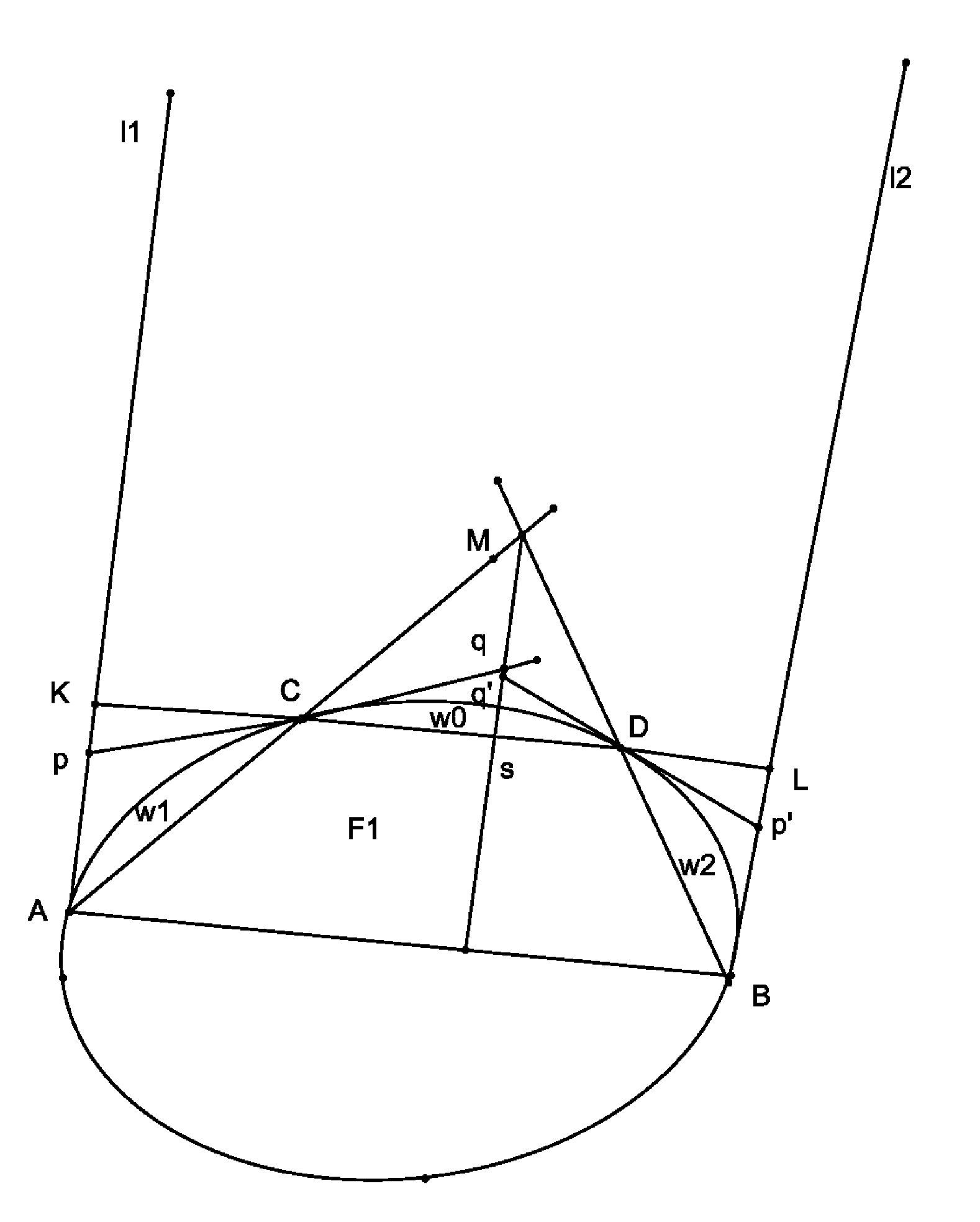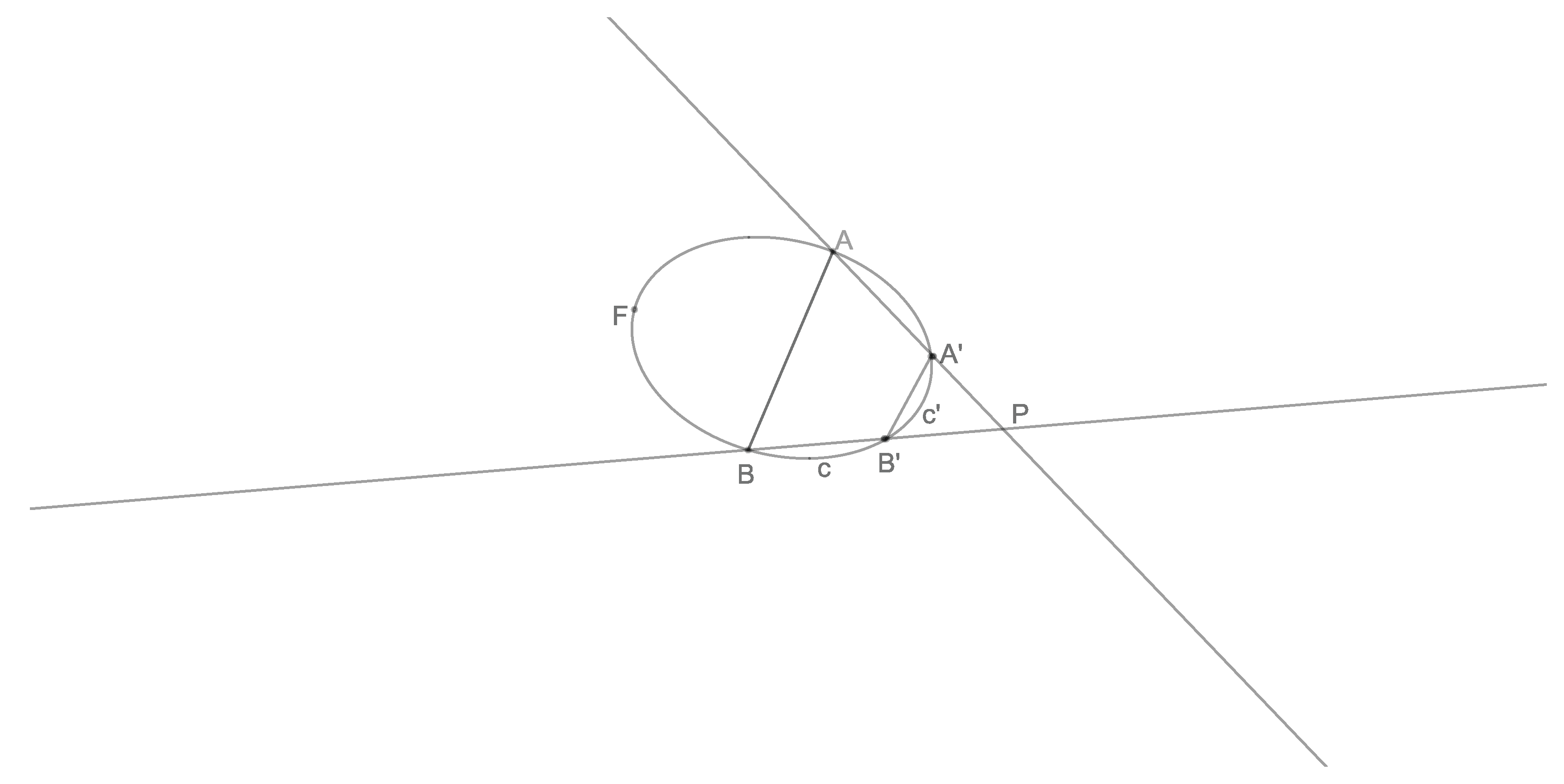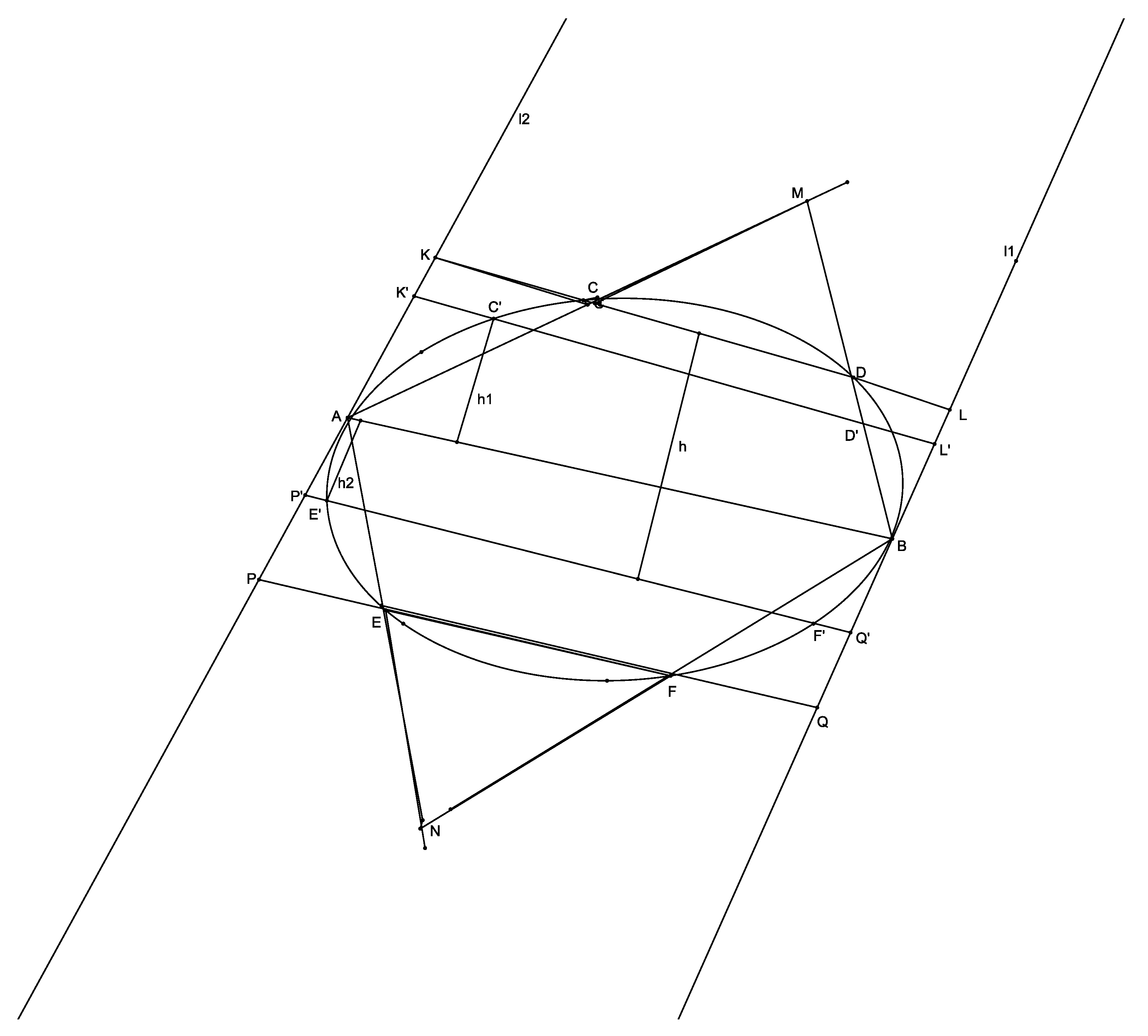2. Problems
Let f be a convex figure in the plane (that is a compact convex set). We denote by G its centroid. D is the maximal chord and d the minimal chord through G. Moreover, L stands for the perimeter, the diameter, the minimal breadth, and A the area of F.
We have to prove:
- (a)
- (b)
- (c)
Proof. Inequality (a).
The formula for the perimeter of a convex figure
F see [
3] is:
where
is the breadth of
F to the direction
is the min. breadth of
F. So we have:
This is because of the obvious
The equality holds for the circle and the convex figures with constant breadth. □
For (b) and (c) we need two lemmas.
Lemma 1. Let F be a convex figure and a diametrical chord. We denote by the support lines at the points respectively. We take the chord parallel to , so that . The str.line intersects at the points . The chord disects F into two parts. We denote the one part by as in the Figure 1. Then we have: . Proof. Let intersect at the point M and parallel to , The support line at the point C intrsects at the points . The support line at the point D intersects at the points . In the triangle the points C and D are the midle points of the sides, so we use equalities of triangles without the proofs. The triangles are equal, the same for , the same for and . We denote the area of the segments of the , , .
We have
. Because .
By we denote the area of the triangle with sides . Analogously . Hence we conclude . □
Lemma 2. In the perimeter of the convex set F there are the points . The chord and are parallel and the point is outside of F. We denote by on the and , like in the Figure 2. We will prove that: Proof. We denote by M the vector .
We have
We easily find
hence
and
but
From the above (1), (2) follows
From (3) and (4) we take
and finally
□
Inequality (b).
The continuity of the convexity asserts us that we can choose the diametrical chord
so that:
where
and
stands for the min.breadth and diameter of
F respectively.
As you see in
Figure 3,
and
are the parallel supporting lines at the points
A and
B.
We take the points on so that .
We easily see, according our first lemma that
That means
where
h is the distance between
.
We now see that the convex
F and the orthogonal
have common part
; therefore, the position of the centroid G of
F depends on the centroid
g of the segments
and segment
. The point
g lies inside the orthogonal
. So we conclude that
and from (6) follows that
Inequality (c).
The equality only for F circle. We suppose that F is not a circle.
We translate the str. lines
closer towards to
until to
such a way the parallelogram
has
we have:
where
and
.
Let now be the part of the perimeter L over of and analogously . We see that and . So, from the lemma 2, we easily see that and . That is .
Moreover, ; therefore, but ; hence, .






